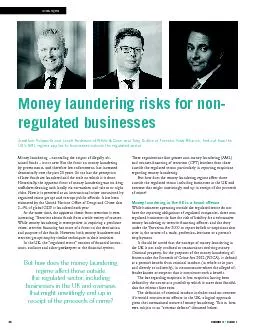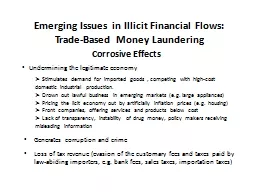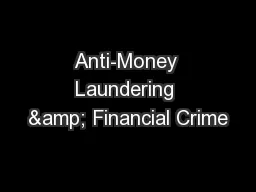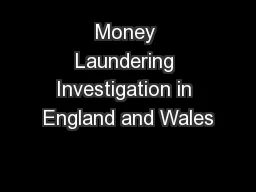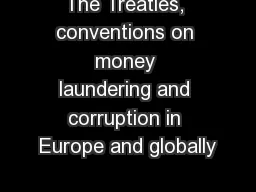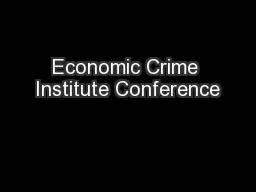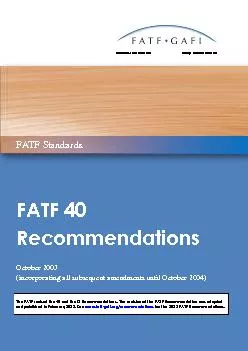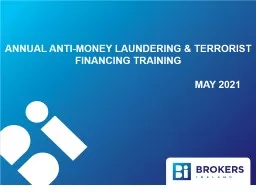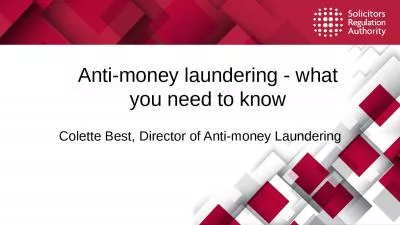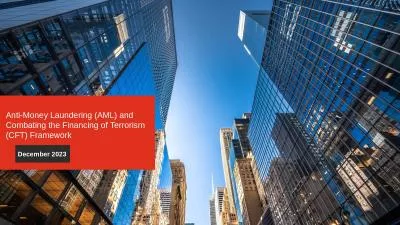PDF-Money laundering risks for non
Author : alyssa | Published Date : 2021-06-18
46 Volume 4 149 Issue 1 regulated businesses Money laundering 150 concealing the origins of illegally ob tained funds 150 is not new But the focus on money laundering
Presentation Embed Code
Download Presentation
Download Presentation The PPT/PDF document "Money laundering risks for non" is the property of its rightful owner. Permission is granted to download and print the materials on this website for personal, non-commercial use only, and to display it on your personal computer provided you do not modify the materials and that you retain all copyright notices contained in the materials. By downloading content from our website, you accept the terms of this agreement.
Money laundering risks for non: Transcript
Download Rules Of Document
"Money laundering risks for non"The content belongs to its owner. You may download and print it for personal use, without modification, and keep all copyright notices. By downloading, you agree to these terms.
Related Documents

